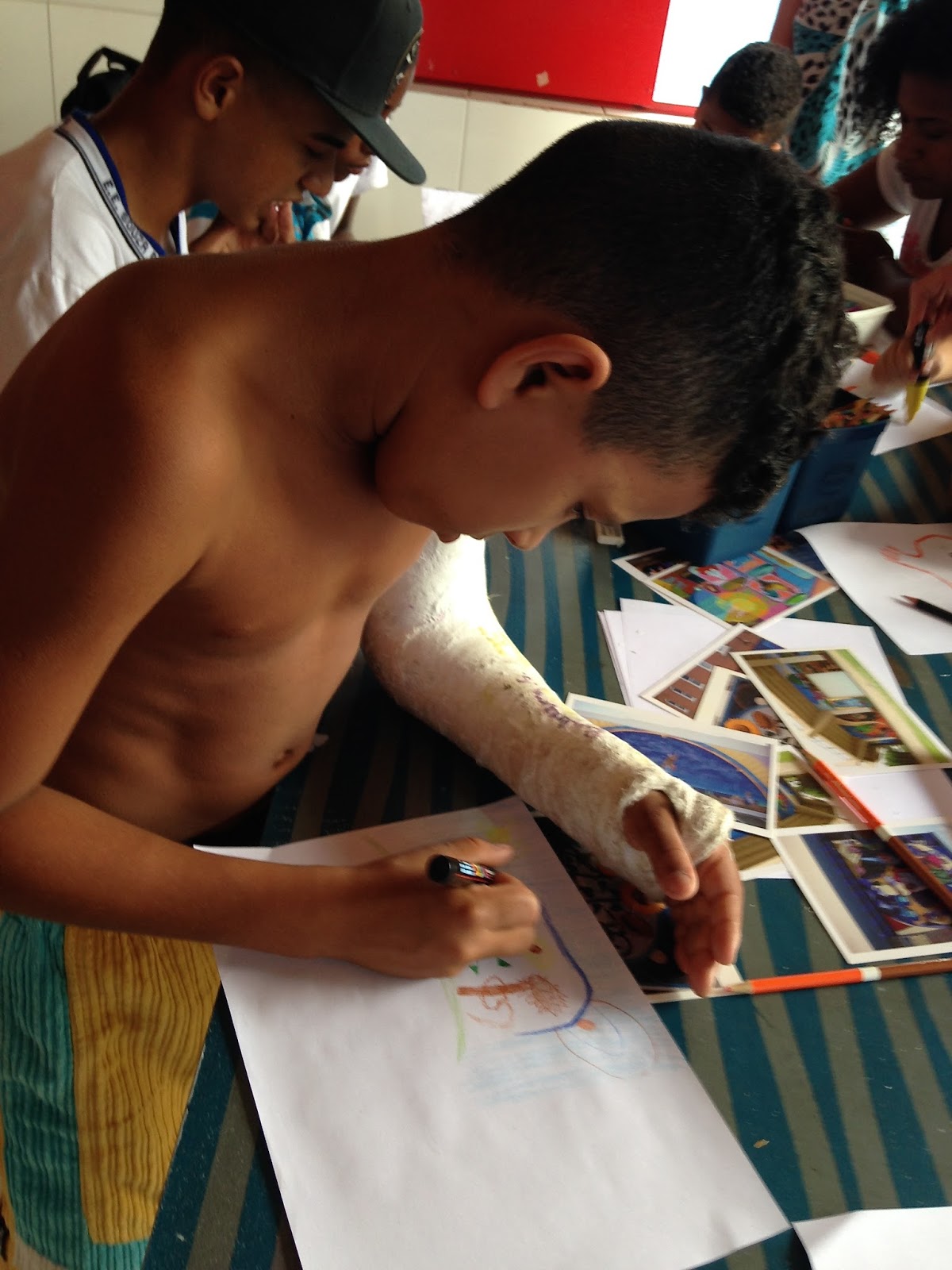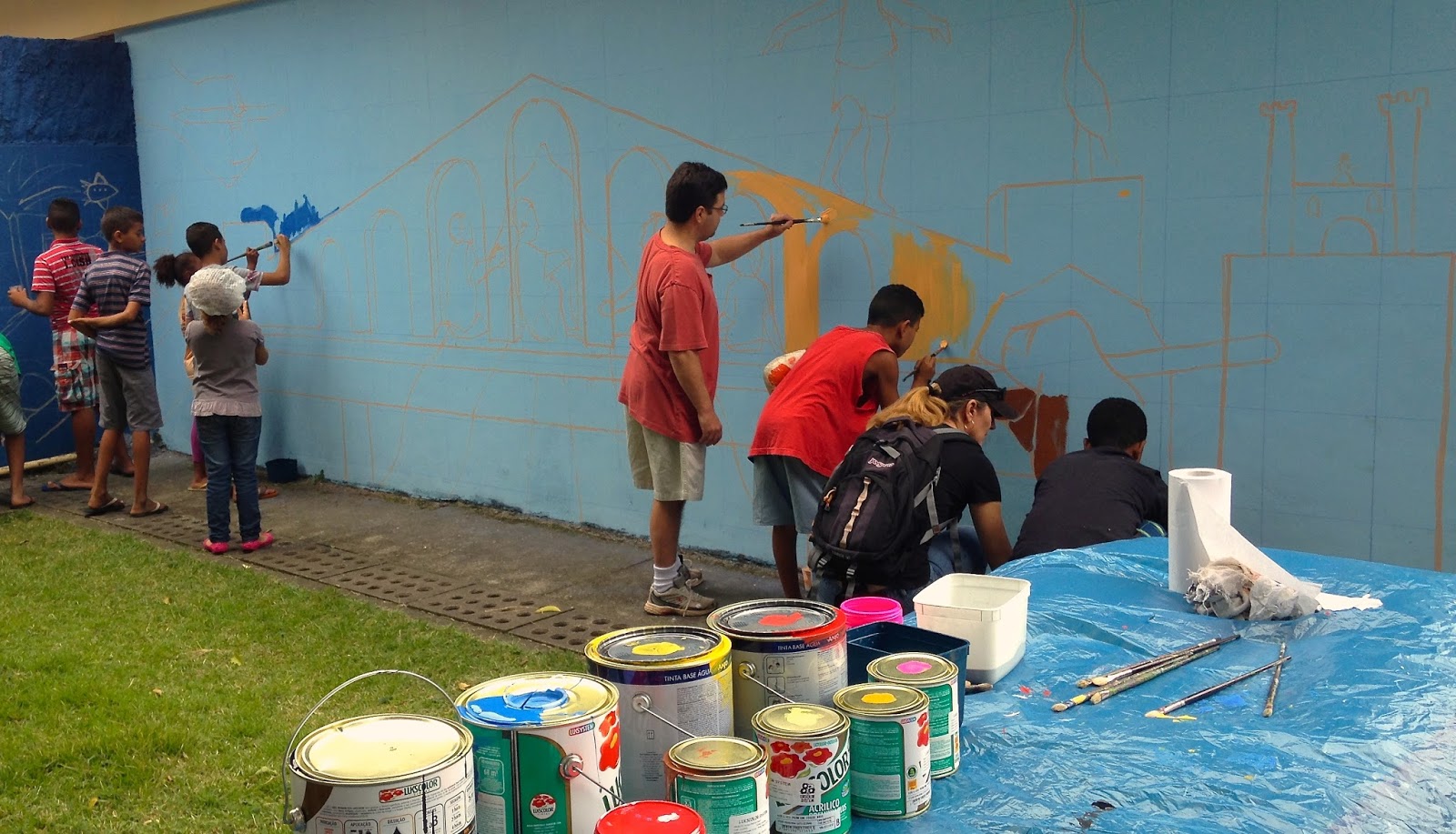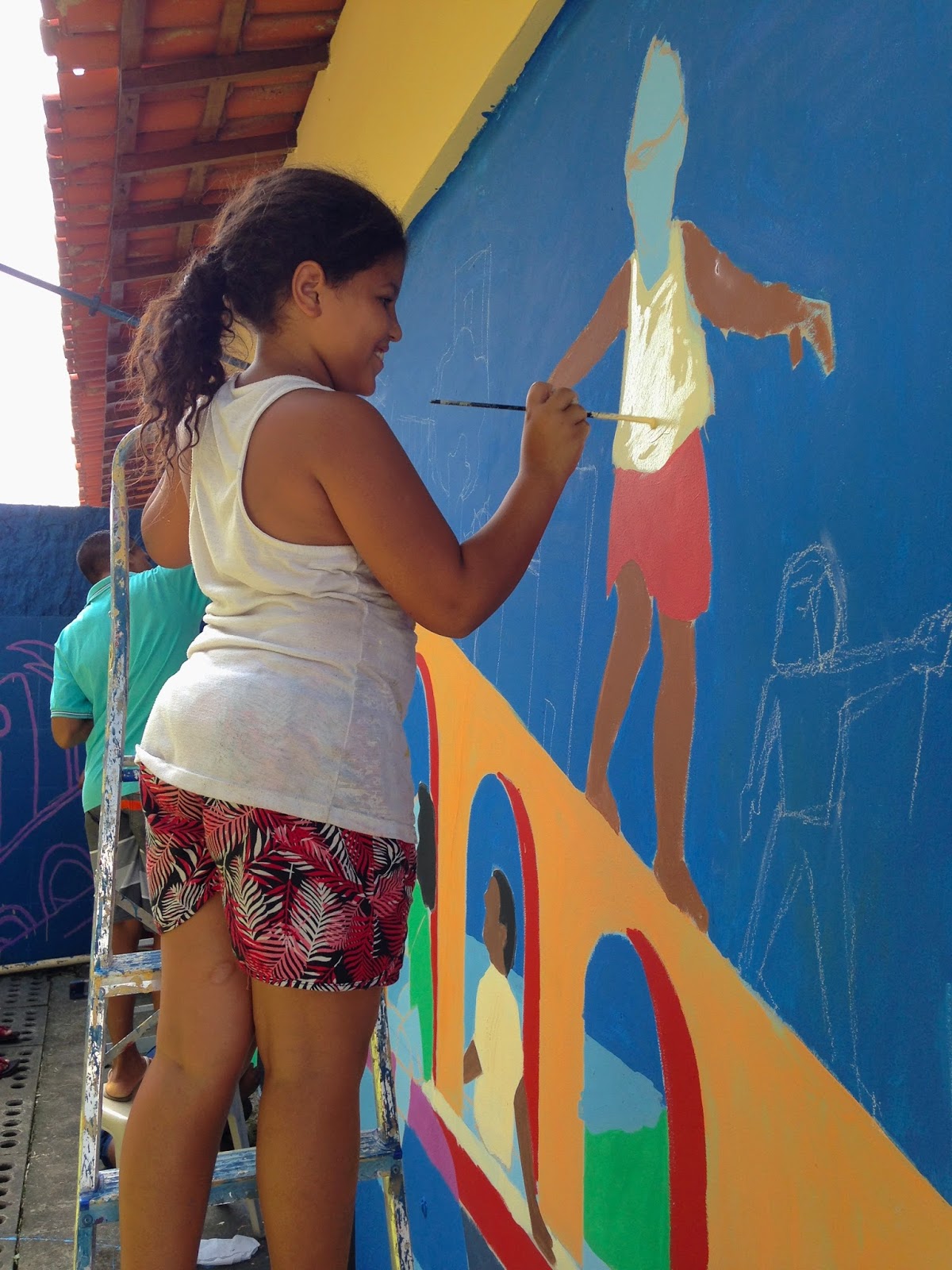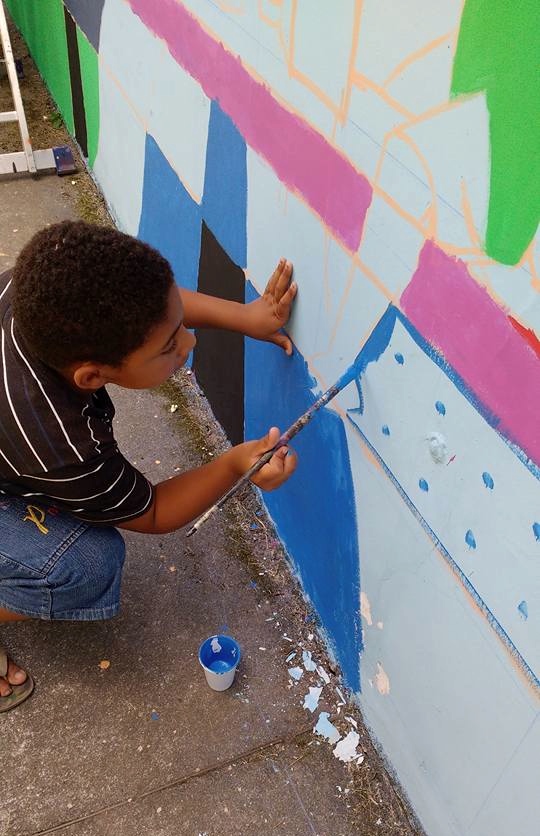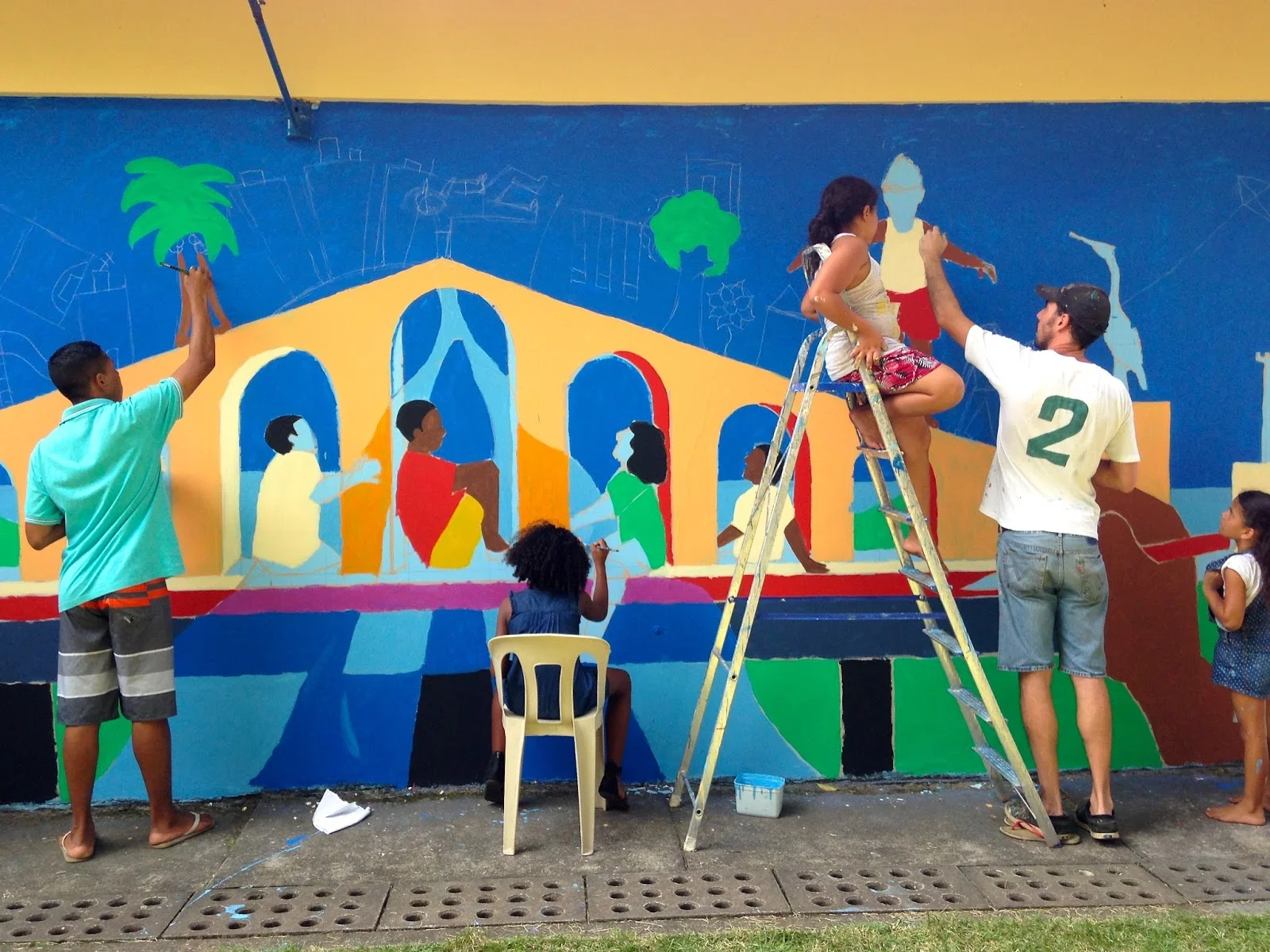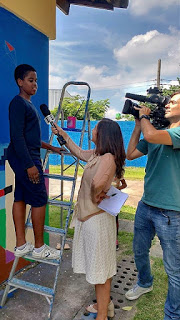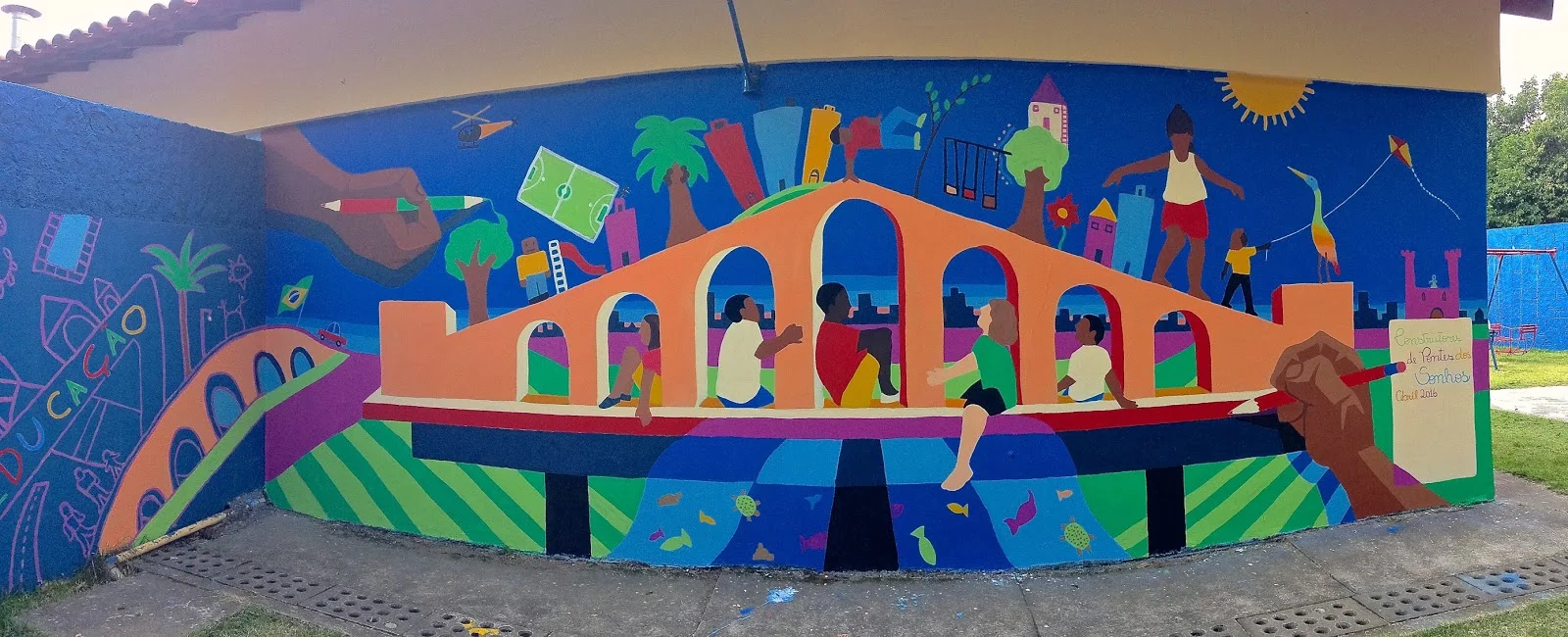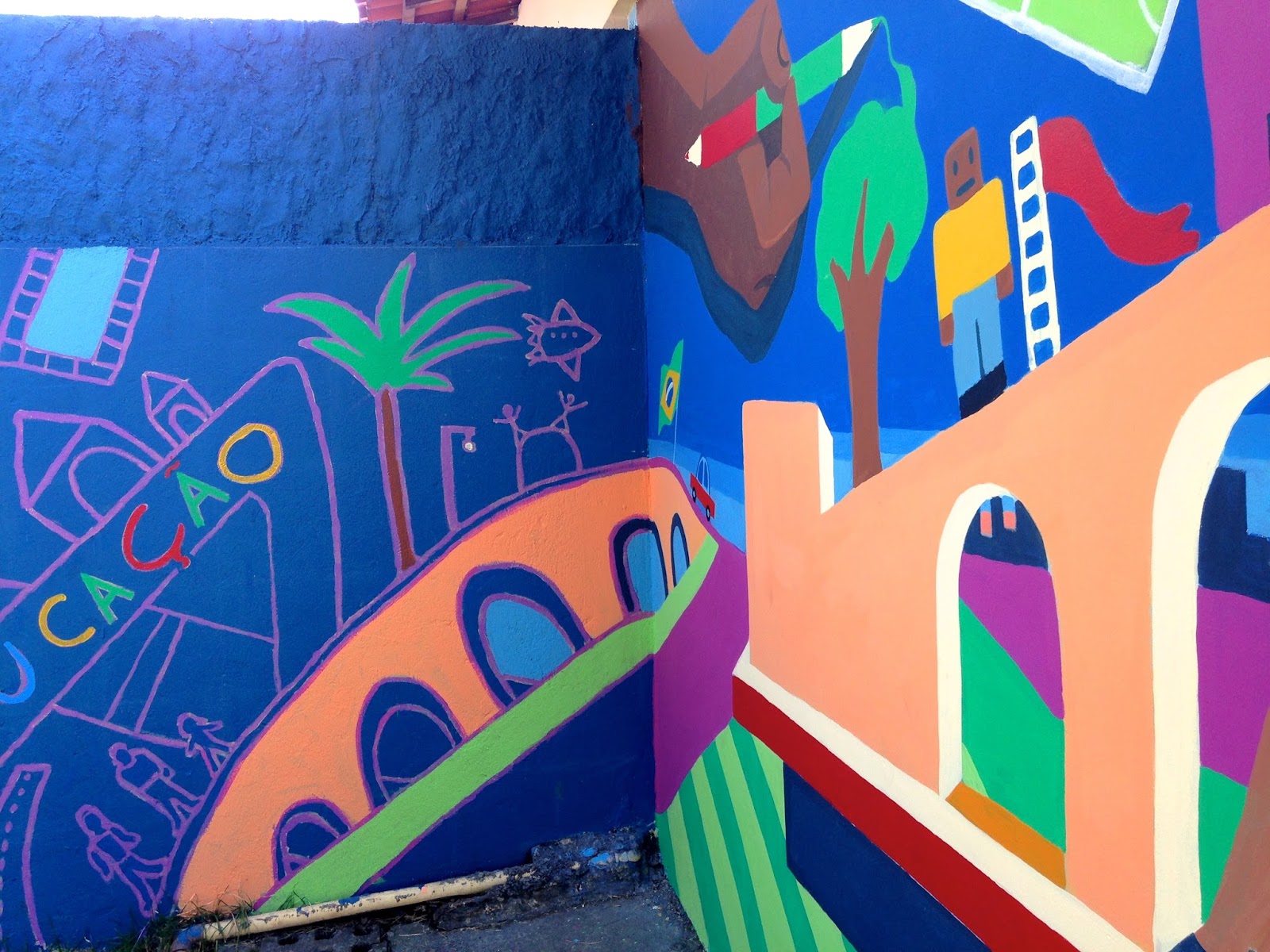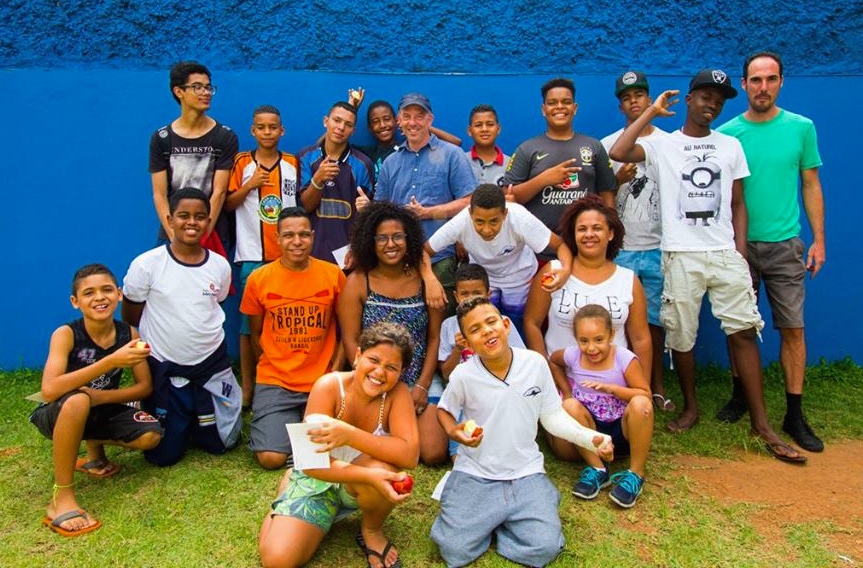Água Branca. It sounds like a New Mexico spa or a white water rafting outfitter along the Colorado River, but here in São Paulo it’s a comunidade hidden behind a trucking company and packed in between the Marginal Highway and the polluted Rio Teite. It’s a community of 3,000 people you wouldn’t run into unless you were looking for it. And, it was the site of my final project in Brazil this spring. I was invited by Parede Viva and the Revivarte project to add to the series of murals they had been making with local residents. On my first day, I was escorted in a U.S. Consulate SUV across a tiny portion of this city of nearly 20 million. The graffiti artist, and my counterpart/interpreter, Kaleb met me there.
After brief introductions, a group of us, Fel, Kaleb, Joyce from the Consulate and Ana who runs a neighborhood salon, took a walk around. As we wove our way down narrow alleys and in between buildings in different states of construction, Ana told us about neighborhood struggles (gentrification, drugs, poverty) and triumphs (Revivarte, a new playground, improved housing). All around us there was wildly inventive painting on walls, vehicles, trashcans and light poles.
We walked along the edge of the comunidade, bordered by a narrow creek lined with banana trees and shacks perched perilously over the water. At one end there was a small bridge (ponte) over the creek. It led to the heavily gated backside of a big box store like Home Depot, but clearly wasn’t accessible to Água Branca folks.
The site for our mural was at the main intersection entering the comunidade on the brightly colored walls of their pre-school. Just inside, giant angry paper mache mosquitos hung from the rafters. They were warnings about Dengue, much more prevalent there than Zika. Next door was a scrap yard where catadores brought their carts (carocas) full of gleaned metal, plastic and wood to sell for a few reales. Parede Viva artist Mundano has been leading a project called “Pimp my Caroca” that supports these and other São Paulo catadores by painting their carts and helping to share their stories.
Pontes (bridges)
The next day Kaleb picked me up. Negotiating morning traffic, he thought out loud saying that we (artists) act as a kind of bridge when we come to work with comunidades like Água Branca. I wondered, if we bridges flow in both directions or just one. And what do we span? From where to what? Is there a toll? And what’s underneath?
In a small casita at the back of the school we gathered for the first time. Our team was made up from local kids who joined us after school (they only go half-days), Kaleb, plus two teachers Ana Carla and Ana Karla. There was a good mix of girls and boys and a range of ages from about 7 to 17. We went around and introduced ourselves (with Kaleb’s animated translation) and said our favorite color. I wrote them down and asked which of these colors should we use in the mural? “All of them!” they demanded. I agreed.
I had planned on showing some images of my murals but we couldn’t get the projector to work, so instead I asked the team about that tiny bridge down the street. What does it connect to? Who uses it? What goes under? They wanted to show me, so we walked over, and immediately the kids started playing on under and atop the bridge. One pirouetted along its spine like a gymnast, others nestled inside its rounded openings becoming new pillars holding it up. We looked at the creek in both directions, first towards the comunidade (relatively clean and healthy) and then the opposite direction past the scrap yard toward the highway (trashed). I asked if there were animals or fish. “Sim, sim” even turtles they say. And looking up we saw in the distance a lone white egret perched motionless in the water awaiting a meal.
It was just a brief adventure, but it completely changed the vibe. By shifting our perspective, by asking a few basic questions, questions that because they were asked implied that they were worth answering, we started to see that bridge in a new way - from overlooked and common to a unique and identifying characteristic of the comunidade. Bridges (or the lack of them) both literal and symbolic were ever present. There are many essential places you simply cannot get to without a car. And the bridge out of poverty is still more of a dream than reality for many in Água Branca.
For a few years now, a quote from James Baldwin’s essay “The Creative Process,” has followed me around. “The purpose of art is to lay bare the questions that have been hidden by the answers.” And it occurred to me again here in Água Branca, if the bridge was an answer, what were the questions?
Back in our casita studio I proposed, if you could build a bridge, what would it connect? Who would it be for? What would it look like? They charged ahead, drawing in teams of two, first pencil and then color. We took a break for almoco (lunch) of little empanadas and soda. After, we presented our bridge (ponte) designs to each other.
(In the news, a vote was imminent in the House on whether they would proceed with an impeachment trial of the President. My new friends were wary. They feared that many people did not understand the implications and motivations behind this push. Like in Kansas where so many vote against their own self-interest out of fear and ideological pressure.)
These short projects mean that we only have a day or so of drawing before a design needs to be composed – that was my homework for when I got back to the hotel.
Our mural design is of a vision in the making. We see the hands of artists creating it. In the center, the Água Branca bridge is reinforced by the kids who sit within it, while their aspirations occupy the space above. Flowing underneath is a mixed message – the creek is populated by turtles, fish and…trash. The adjoining wall is a blueprint for the future, composed of all of their bridges interconnected, allowing everyone access across the city.
The next day we made quick work of squaring –up the design with a chalk snapline (the simple builder’s tool was a revelation to many). And then it was time to paint, but we had to wait… for the Consul General, Ricardo Zuniga. Following protocol, he would be the first to paint. We had met earlier in the week when I was invited to join his family at a new exhibition of Tim Burton drawings. At the show, me and the Consul General, who had a major hand in opening relations with Cuba recently, discussed our favorite Burton films and agreed Edward Scissorhands and Beetlejuice were the best, while the recent remakes of Alice in Wonderland and Charlie and the Chocolate Factory were overblown disappointments.
Painting went quickly. The early fall weather cooperated, storming dramatically at night. People on the street parked their chairs on the sidewalk to watch the progress. My Portuguese was still terrible, but I knew the important colors – vermelho, laranja, azul and a few directional words like up, down, more and less. The rest was communicated by example and culturally appropriate hand gestures (I learned they weren’t all the same as in the U.S.)
The day before we finished, the media giant Globo TV (the same Globo that had been fanning the flames of impeachment) came to do a feature about our project. We were prepared. We had talked about how to share our story. It aired the next day. We watched and cheered when the deep voiced news anchor intoned Água Branca with a gravitas rarely heard, and then, just like that, it was time to say goodbye.
"Construtores de Pontes dos Sonhos - Builders of Dream Bridges"
We finished the last details, and then I quickly washed the brushes before our dedication ceremony. To each of the painters, I handed one and said, “This is a symbol of our work, but it still has life in it. You can choose to use it by yourself and do a little, or you can work with your friends and do a lot.”
After cake and sodas and many cheers of Parabens!, we jumped into a VW van and headed to the movies to see Superman vs. Batman. It was dubbed in Portuguese - probably all the better for me. During the movie, the design team was rambunctious and excited, waving their paint brushes in the air at the climax of each battle between superheroes.
Coda
A few weeks after getting back to Kansas, I received a fantastic surprise in my email. The crew from Água Branca, along with Kaleb, had muralized the bridge - a small but significant gesture, completing an idea and reinforcing the notion that art is not disconnected from life.
(And since my return, President Rousseff has been relieved of her position while the congress proceeds with an impeachment trial. The interim president, Temer, quickly reformed his cabinet to include only white men and shut down the Ministry of Culture, which was only reinstated after massive protests.)
I am grateful to all of the folks from Água Branca who welcomed me and gave their time for our project. Also, muito obrigado to the Meridian International Center, the U.S. Consulate in São Paulo, Parede Viva, Revivarte, filmmaker Adriano Choque and my friend Kaleb.






